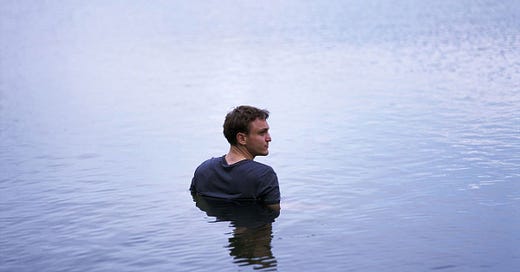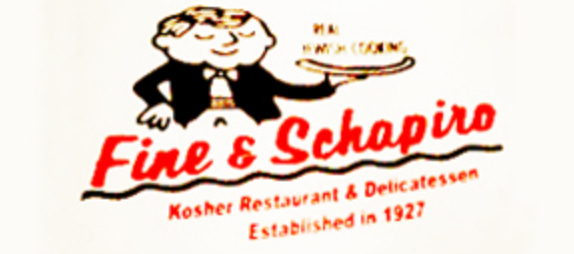My second favorite fall activity beside sweating less is catching the New York Film festival. Every September unmanicured crowds of mostly old but some young people descend upon the hallowed grounds of Lincoln Center to catch a movie or five. Seeing one costs more than your average ticket and the showings tend to crop up in regular theaters shortly after the festival’s close, so I try to make sure I judiciously allocate my resources towards the right stuff — obscurities without distribution, or a bigger tentpole I’m impatient for, prices be damned. Since the films at NYFF typically play elsewhere first (Cannes, Venice, Toronto), I’m usually well-armed with critical reviews and friendly suggestions for what to see by time of the announcement.
As I cobble together a personal itinerary, I’d try to pencil in a minute for food — glum work in the tony 60s if you like I are sub-gentry. Most restaurants in proximity to Lincoln Center are wallet-accosting and unfathomable anyway for a meal jammed between screenings. (Though one year, after the festival’s close, I treated myself to an al fresco lunch at Boulud Sud. I fiercely recall the power of the sun coupled with a freaking heat lamp.) The ‘Wichcraft nearby closed, where there ought to be slice shops are Zara and Pottery Barn, and the cafe at the theater is out of the question. I have in the past decade unabashedly pined for a Chipotle (pre-virus, of another kind) to settle on Broadway and 66th. Sweetgreen rose to the occasion much later (after the dust settled on fast-casual dinig), and still too many stop lights away.
Now ideally I’d snag a pastry to nibble at it under the brilliance of Walter Reade’s newly installed screen but more I’d likely swallow it whole while waiting outside on line. A goblin of a cookie from Levain, or something from Breads Bakery if the line isn’t too long, but it almost always is. After the movies would be dinner: alone pizza from Freddie and Pepper or with someone else, John’s Luncheonette around the corner or Fine & Schapiro’s on 72nd — old-school standbys befitting occasion, location, and bank account. John’s was dingy-cozy, Fine & Schapiro’s dingy-casual. The blue plate specials were passable, the pastrami on rye above average, none too extravagant to distract you from conversation. Same for the dining room — laconic meal-time vibes with older patrons. They both closed this year. If you know of somewhere decent in the area, let me know. I’ll bookmark it for next year instead of packing saltines or emergency Milanos.
The festival this year materialized virtually and at the city’s make-shift drive-ins, and with remote work that meant I could actually attend press screenings (coverage forthcoming) since films are allotted a 48 hour to five day viewing window. Watching movies on my laptop necessitates so many papercut tasks—logging in, setting up, cables and Chromecasts, unplugging and rerouting, multiple device accusations—that pile up and deplete my motivation in this technology-enabled though not facilitative present. I eventually established a routine of watching a movie halfway through my dinner as a compromise between my attention span and stomach.
The drive-in, on the otherhand, is an ordeal that evokes hot summer nights, windows rolled down, and not actually remaining seated (but standing outside of the car), which current Covid regulations prohibit. Plus, a third of NYFF movies are foreign affairs marked by gorgeous cinematography and minutes-long takes. How would they fare in this viewing environment? Would subtitles be clearly visible across such a great distance through the windshield? Is the movie screen of sufficient heft? Are the speakers in my hand-me-down sedan properly calibrated? Alleviating other concerns: onsite bathrooms and complementary jump-service, and someone pulling a wagon with snacks shouting “POPCORN!” I’d later discover.
I missed out on the new Sofia Coppola flick, which appears disappointingy pedestrian enough vehicular viewing, but I scored tickets to the German film Undine. It is directed by Christian Petzold, who is responsible for a loose trilogy mightily dubbed “love in the time of oppressive systems.” His M.O. is contorting myths and genre into his own woozy fantasy and inscribing them with a restrained devastation of love and identity. Happily I report that his latest was no different.
Petzold’s reimagining of a German myth about a water nymph unfolded on a screen beset by trees outside the Queen’s Science Museum, now the Queens Drive-in. It played tricks on my eyes: because of the wind, the images unduated as if seen through a pool of water, less of a hindrance, nearly an apt enhancement to the film. After her boyfriend breaks up with her unexpectedly, Undine (Paula Beer) fatefully meets a sea-diving mechanic (Franz Rogowski, a tender German version of Joaquin Phoenix) and they fall in love. But someone lies and someone gets hurt, necessitating redemptive measures. All this with a modicum of words; the two seem connected in deeper, more mysterious ways. Petzold chooses again locales of transience; a neatly sterile short-term rental, the train station depot, where lovers teeter on the edge of the platform waiting until the doors close to kiss goodbye. Even Undine’s job turns out to be a contracted position.
The observable outside dark, polluted by light (as opposed to the pitch-black of the theater) only exacerbated the film’s topical isolation. It also enabled me to inconspicuously tuck into a bag of New York spicy dill pickle kettle chips and brisket on rye c/o David’s Brisket House. Traditions never die.
Short takes from the festival:
Malmkrog (dir. Cristi Piu): The eloquent contemplation of war and Christianity among five Russian aristocrats amounts to a filmic confrontation better read than seen. Based on “Three Conversations” by Vladmir Solovyov, the movie unfurls for 238 minutes in a dignified Transylvanian manse. The greatest source of tension lays not in the fissures in embattled gentry-think—ranging from Eurocentric chauvinism to Tolstoyian pacifism—but in comestible mystery. I was less inclined towards the ideas of a dying breed of aristocrat, and more curious about the details of 19th century Russian food and drink (likely European-leaning) that remained beyond the purview of the buttery camera.
The Last City (Heinz Emigholz): In this globe-spanning fiction the characters may be cosmologically connected. An unvarnished — and better — version of Cloud Atlas with a long-tail incest joke and a thorough detailing of the war crimes committed by the Japanese.
City Hall (Frederick Wiseman): Four hours of footage looking at the Boston government keenly illustrates democracy at large. Real-life Parks and Recreation untrammeled in its mundane glory. As per his want, Wiseman’s sprawling documentary presents a quotidian tableaux of the city’s inner workings — public servants and government officials in the line of pencil-pushing duty with particular focus on Mayor Marty Walsh who accounts for about a third of the film’s scenes. There are task forces and budget meetings; people getting married, people disputing parking tickets; a coalition on fair housing; Veterans Day at Faneuil Hall. A man with giant rats and no wife faces eviction. The residents of Dorchester listen, and speak, when a weed dispensary comes to their side of town applying for a permit. It would be Boston’s first.
It’s strange to be nostalgic for administrative tasks that in real life are never as cut and dry as what’s prosaically captured by Wiseman’s unobjective camera. Maybe it is the quarantine and a severe lack of daily encounters, but for me this mosaic of strangers going about their usual work and performing unanxious tasks proved an invigorating sight for my sore eyes confined to a walkable radius. After all this is over, I too will wait on line in a drab municipal building without losing my patience in order to witness bureaucracy and experience life first hand. Opens virtually at/on Film Forum on October 28.






